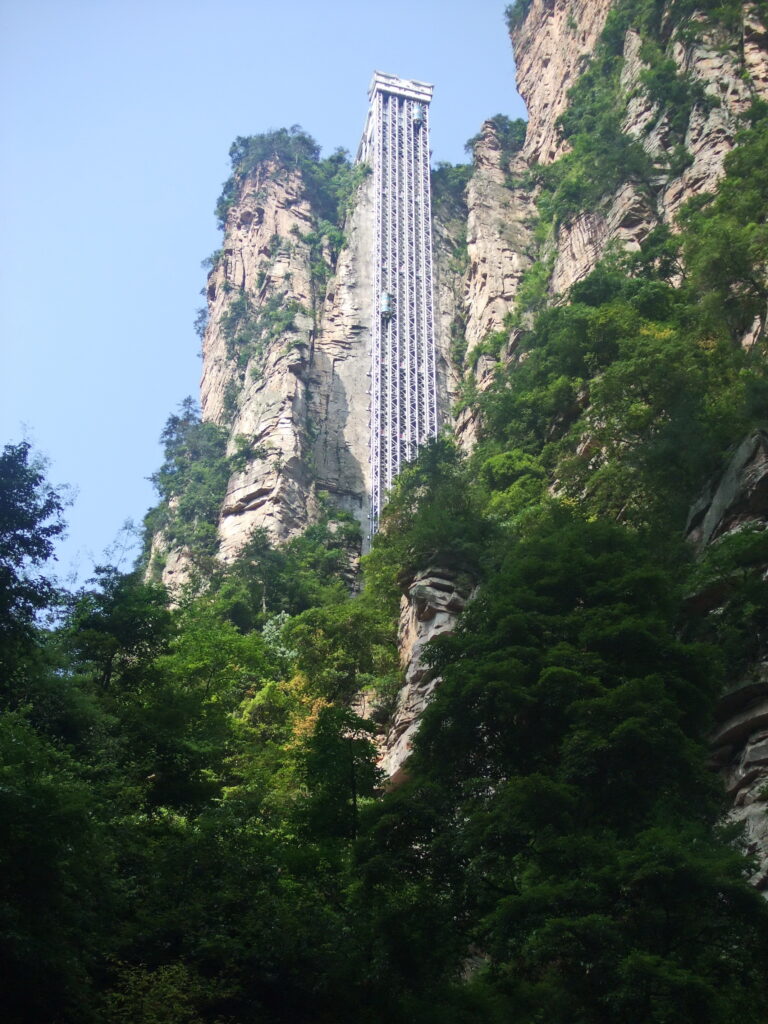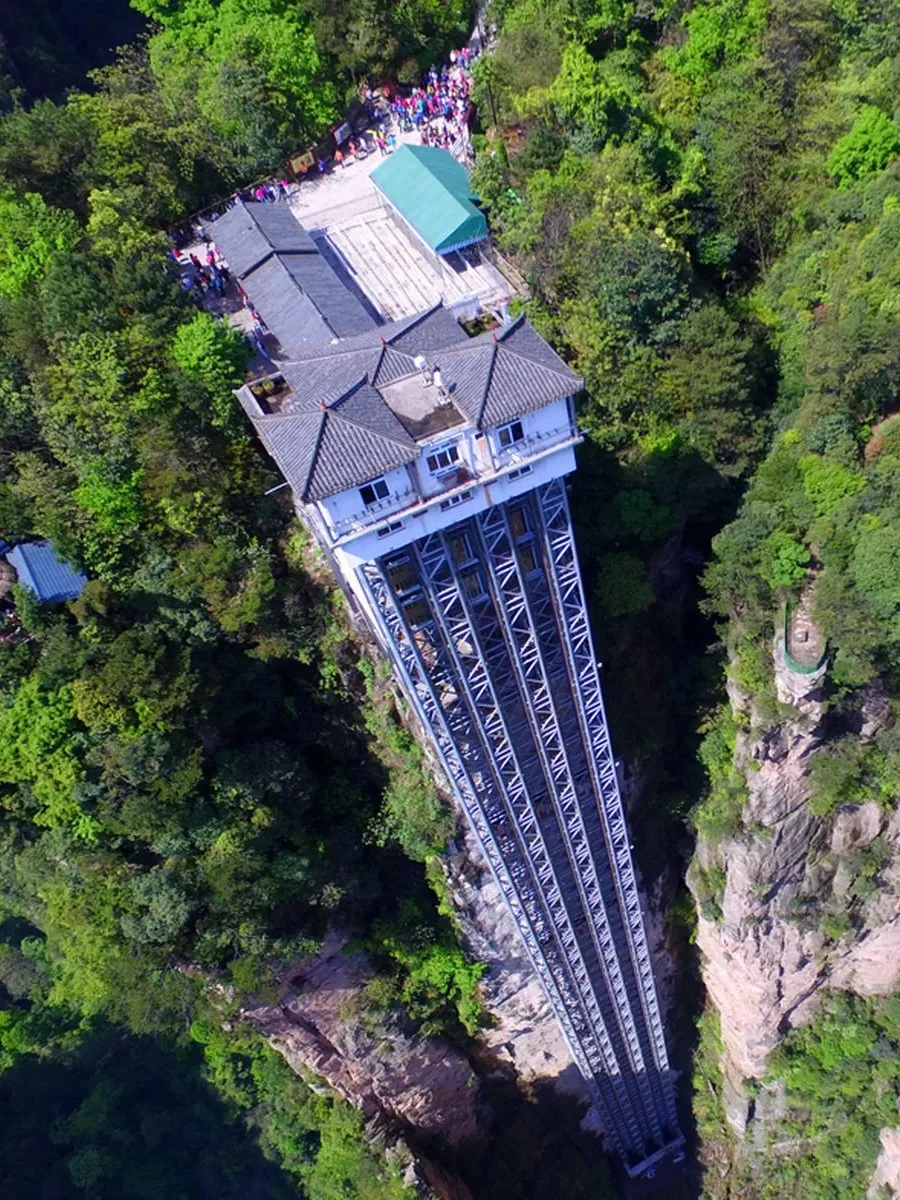The Bailong Elevator, also known as the Hundred Dragons Elevator, is a glass elevator located in the Wulingyuan area of Zhangjiajie, China. It is a unique engineering marvel that has attracted millions of tourists since its opening in 2002. The elevator holds the record for being the world’s highest outdoor elevator and the fastest in the world, taking only 1 minute and 32 seconds to ascend the 326-meter cliff face.

The construction of the Bailong Elevator started in 1999, and it took three years to complete. The elevator was built to provide tourists with a faster and more convenient way to access the observation deck at the top of the cliff. Before the elevator’s construction, visitors had to climb 3,800 steps to reach the top, which was a challenging and time-consuming task.
It has three transparent cars, each of which can hold up to 50 passengers, and it can transport up to 18,000 visitors per day. It has become a popular tourist attraction, and it has brought significant economic benefits to the Wulingyuan area in China.

However, the Elevator has also faced criticism from environmentalists who argue that the elevator’s construction has damaged the natural landscape of the area. The elevator was built on a UNESCO World Heritage site, and there are concerns that it could negatively impact the environment and wildlife in the area.
In response to these concerns, the Chinese government has implemented measures to reduce the elevator’s impact on the environment, such as limiting the number of visitors and implementing strict regulations on the elevator’s operation. Additionally, the government has also invested in the restoration of the natural landscape in the Wulingyuan area.
Riding the World’s Tallest Outdoor Elevator: Understanding the Technical Specifications of the Bailong Elevator
The Elevator is a glass double-deck elevator built on the side of a cliff in china. It is claimed to be the highest and heaviest outdoor elevator in the world, with a total height of 1,070 feet (326 meters). The lower 505 feet are embedded inside the mountain wall, with the upper 565 feet consisting of exposed steel derrick. The elevator has three cars that cling to the side of the mountainside, with each car able to carry up to 50 passengers at a time. It takes about two minutes for the elevator to travel from the bottom to the top, and it operates from 7:00 AM to 6:00 PM. Its construction took place from 1999 to 2002, with a ticket price of CNY 65 (about $9.25 USD) for a one-way trip or CNY 144 (about $20.50 USD) for a round trip.

The elevator works through a combination of advanced technologies including hydraulics, cableways, and electric motors. There are two sets of hydraulic pumps, one set for each car, that push hydraulic oil into the cylinders to lift the elevator. The elevator is powered by an electric motor that drives a set of reduction gears, which in turn drive the cable drums. The design of the elevator is such that it can withstand strong winds, earthquakes, and other natural disasters.

